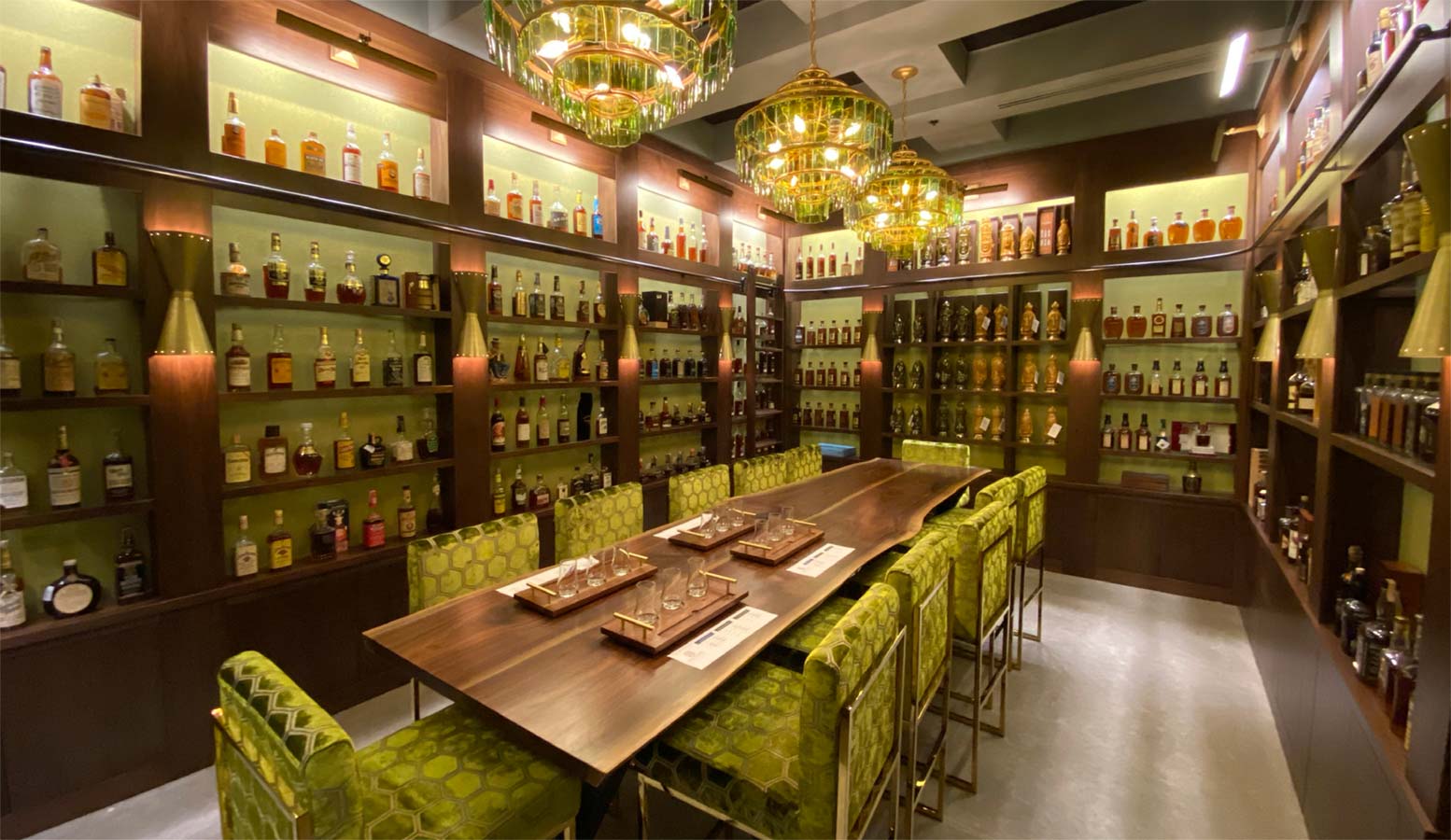High Hopes for Bourbon Tourism
Would you like to see the past, present and future of bourbon tourism in just one place?
Visit Log Still Distillery in Gethsemane, Ky., 20 minutes south of Bardstown. On that site, J.W. Dant Bourbon was created and produced for decades prior to Prohibition and after it until the late 1960s. Now, J.W. “Wally” Dant, III, the great-great-great grandson of J.W. Dant himself, has created a new distillery and tourism campus that, when complete, will feature:
- an amphitheater with seating for 2,000 (finished)
- overnight accommodations including a five-room bed and breakfast and a restored four-bedroom mansion from the 1800s (finished)
- a train depot connected by rail to Bardstown (operable, but being gussied up)
- a 20,000-square-foot events center (framed)
- a full-service restaurant (foundation poured)
- a tasting room and micro-distillery (finished)
- a production distillery (foundation poured)
- a 12-acre fishing lake (finished)
When Dant announced the venture two years ago, the successful healthcare entrepreneur predicted Log Still Distillery would cost him $12 million. Last year, the price tag surpassed $30 million.
“I wanted it to be the best it could be, and so we’ve kept adding to it,” Dant said, grinning confidently. The majority owner of the enterprise, Dant bought the 325-acre property and found it “almost impossible to ignore the tourism opportunities. Sure, it’s a place where we’ll make bourbon. But bourbon tourism is also about history, entertainment, cocktails and food. And for me, it’s family.”
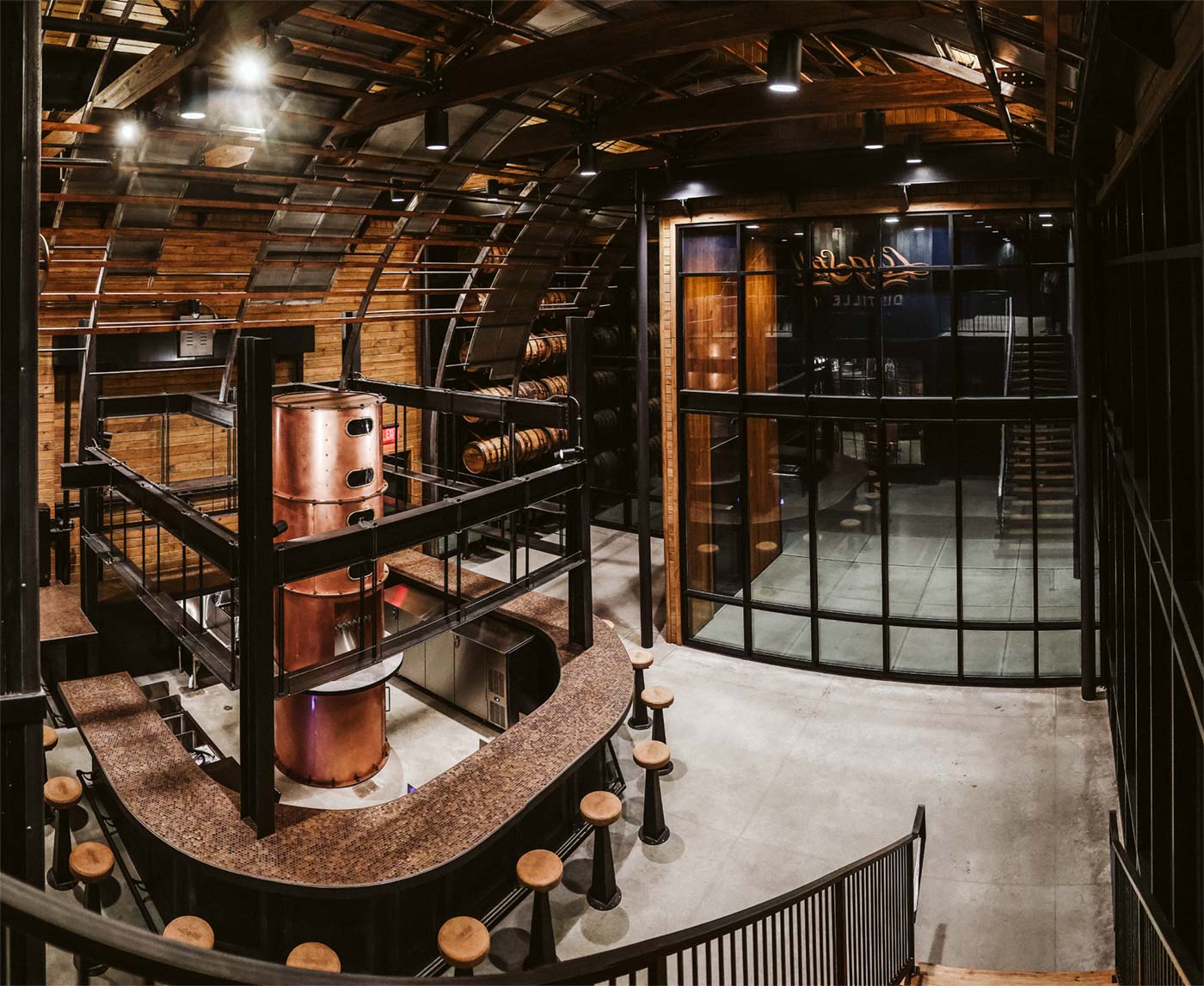
Photos courtesy of Log Still Distillery
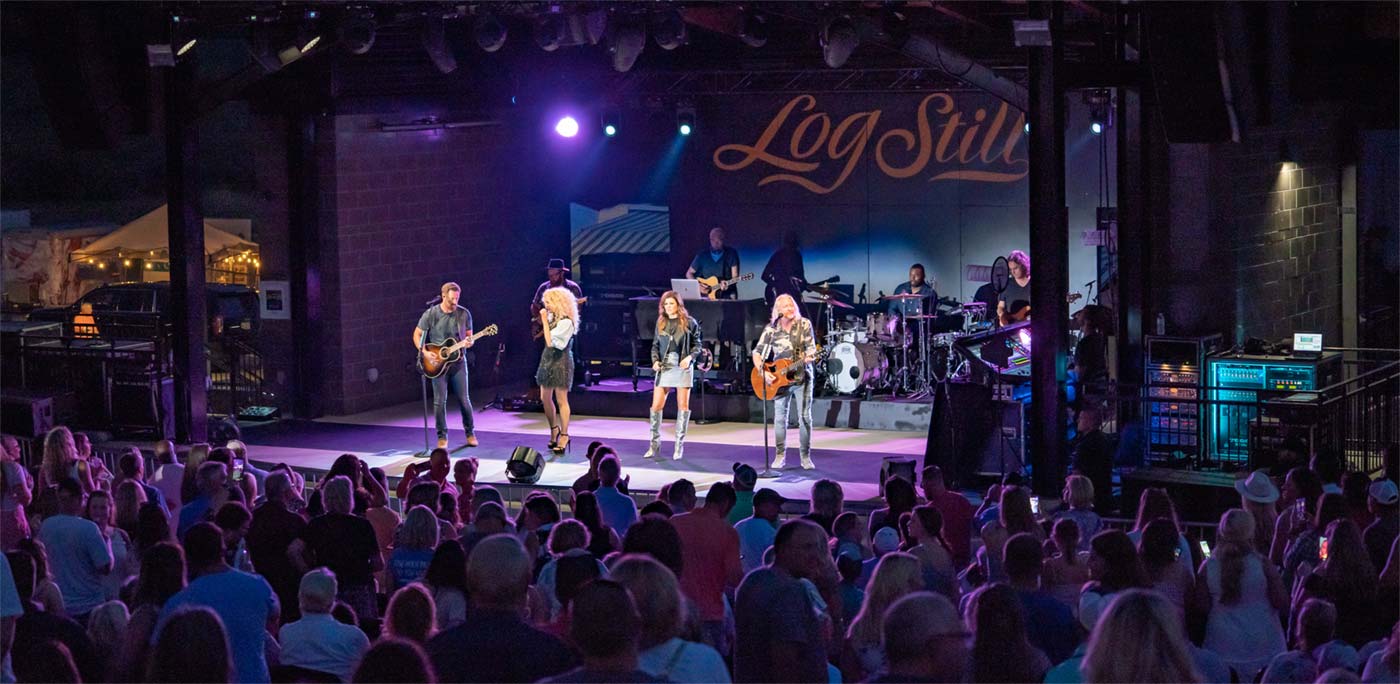
Top: Log Still Distillery tasting room and cocktail bar. Above: Log Still Distillery amphitheatre
As the newest distillery site in Kentucky, Log Still Distillery is a micro-example of bourbon tourism’s macro-potential. It’s a stay-for-a-full-day (or longer) opportunity, where whiskey fans can get about everything they’ve ever wanted: immersive experiences, overnight rooms and family-oriented features (fishing and live music). Distillery hopping is a blast, but arriving at one location, stowing your bags, touring a distillery, having cocktails and meals before you take in a concert and walk directly to your room—that’s hard to beat.
Though Maker’s Mark Distillery has made no official announcement, plans are in the works for a boutique hotel set amid a 1,600-acre wooded nature preserve on its Loretto, Kentucky, campus. Owners of Bardstown Bourbon Co. (BBC), the magnificently modern distillery on the outskirts of Bardstown, also envision a hotel of their own on the plant’s property. BBC leaped from nothing to industry leader in 2016 by creating the first full-service restaurant and bar at a Kentucky distillery.
Originally, BBC’s spacious entry hall was set aside for large events. But when Kentucky laws changed to allow the sale of cocktails at distilleries, the room was reconfigured to accommodate the restaurant and an expansive cocktail and whiskey bar. In 2019, BBC added a swanky lounge for private barrel tastings inside a rickhouse. In 2021, a vintage whiskey library was opened adjacent to its bar.
“There was no way we weren’t going to make the most of the law change, and that meant we were scrapping our plans for that room and scrambling to build a restaurant and cocktail bar,” said David Mandell, then-CEO in 2017. The result was throngs of customers coming to BBC’s Kitchen & Bar and queuing up for tours. And so the reconstruction continued. A massive empty space behind its bar—originally planned to house its bottling line—was converted to private event spaces and classrooms for visitors. Mandell said it was tough to watch virgin concrete jackhammered to make the changes, “but we knew it was the right call. We knew tourism was already something really big.”
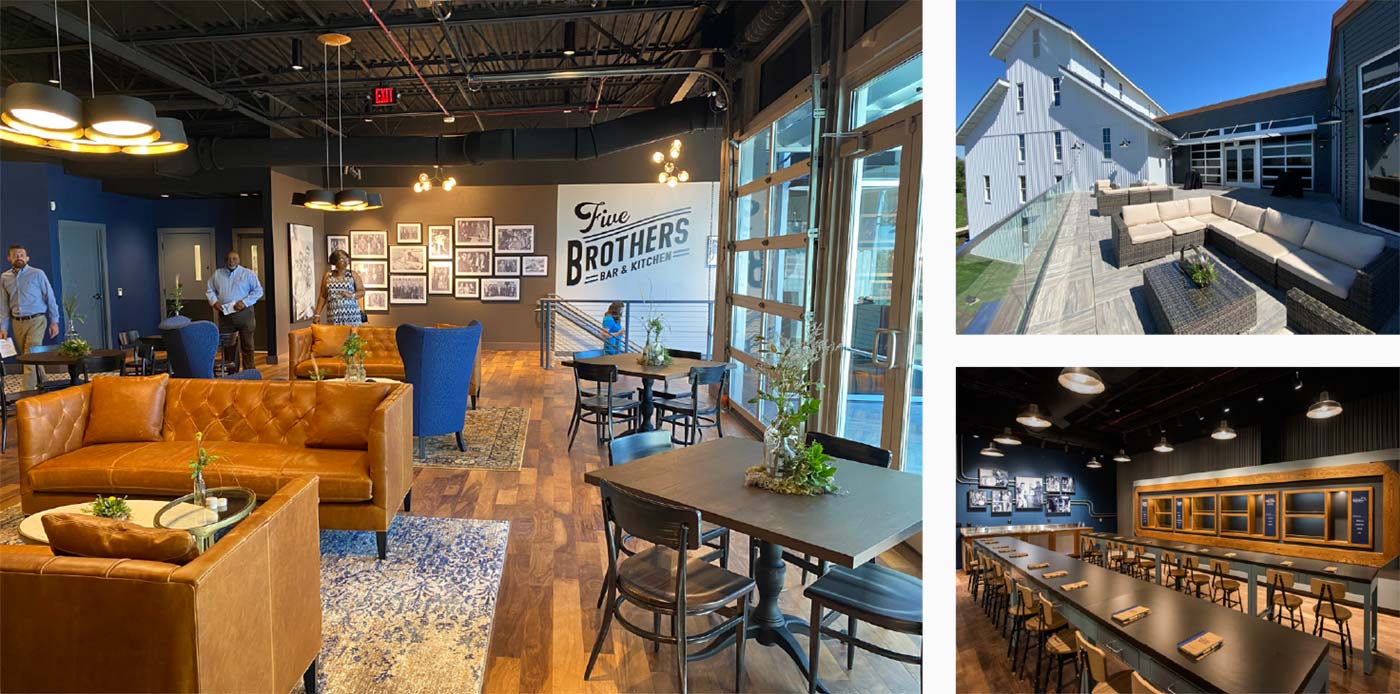
Above: Heaven Hill Five Brothers Bar & Kitchen. Photos courtesy of Heaven Hill. Top right: Five Brothers deck. Below right: Heaven Hill’s You Do Bourbon classroom.
In June, when Heaven Hill cut the ribbon on a $19 million visitor center expansion, its president, Max Shapira, said, as if to justify the expenditure, “We are bullish on bourbon.” The newly named Bourbon Experience includes a You Do Bourbon class that includes tasting four cask-strength whiskeys before filling and labeling one’s own bottle. Across the hall lies a multimedia theater in which visitors can learn the story of how the Shapira family founded the distillery in 1935. Around the corner from there are numerous rooms dedicated to stories of its most famous brands. And that’s not all: On the floor above is the Five Brothers Bar (a nod to the five Shapira founders) and a full-service restaurant set to open in December. Between those is a spacious outdoor deck overlooking dozens of Heaven Hill’s 20,000-barrel rickhouses.
Fancy sleeping in some of the oldest bedrooms in bourbon country? Head to Samuels, Ky., where Maker’s Mark managing director, Rob Samuels, purchased a 200-year-old home built in 1820 by his great-great-great-great grandfather’s family. The home, which sleeps eight, features modern amenities added thoughtfully to the historic structure to preserve its rich history.
At $1,500 per night, it sets the bar high for experiential accommodations. “The idea of opening the doors to this home and letting passionate whiskey lovers experience it is pretty much what my family has always done,” said Samuels, referring to the countless dinners hosted at the home of his parents, Bill Samuels, Jr., and Nancy Samuels. “I wanted people to enjoy the legacy of The Samuels House while having modern touches like well-appointed bathrooms and the highest-end mattresses.”
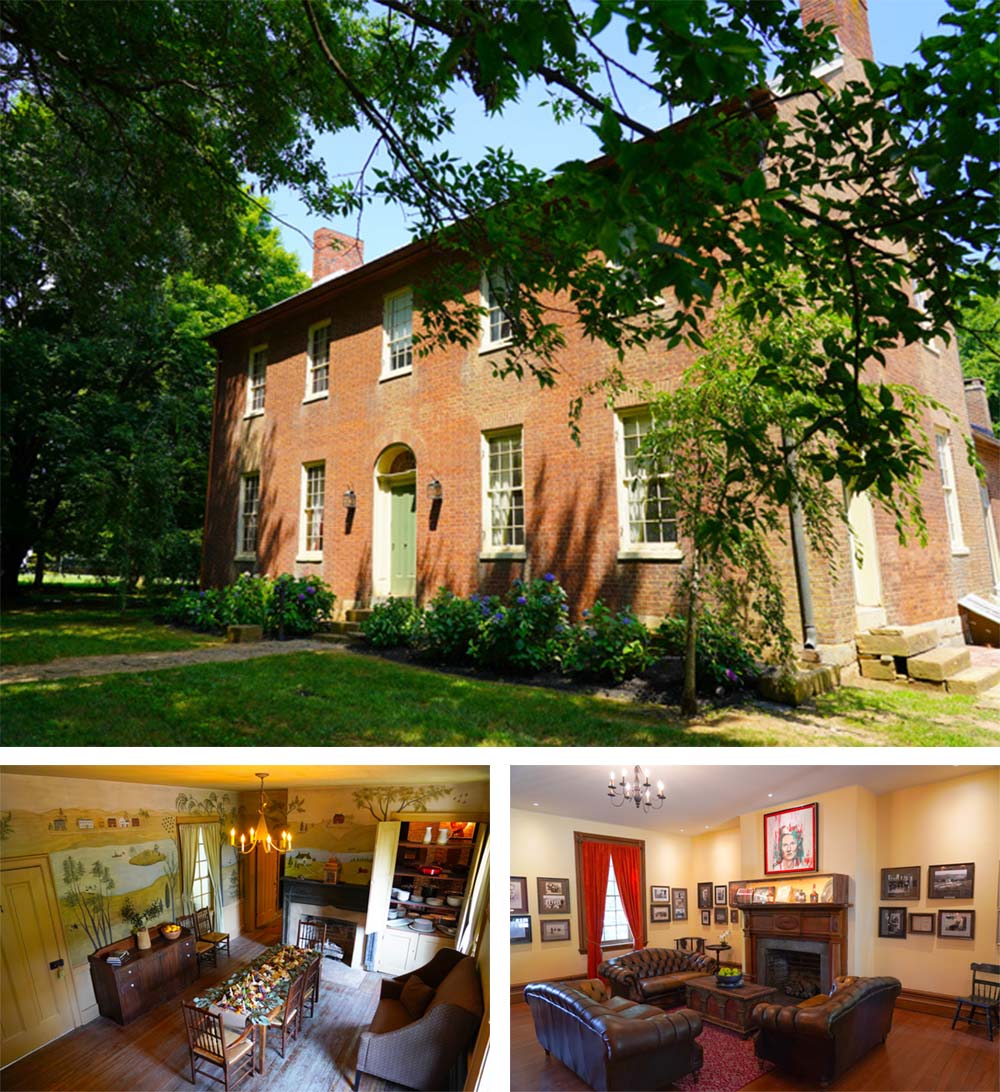
Guests can stay at The Samuels House.
BOURBON TOURISM BEGAN HILARIOUSLY AND HUMBLY SMALL
Shapira recalled how bourbon tourism began in Bardstown in the 1980s. Courteous strangers would show up unannounced, knock on Heaven Hill headquarters door and ask for a look around the plant. Shapira, now the president of the family-owned company, thought, “Why not? Let ’em in.” He continues, “So, we’d get somebody to take them around, show them bottling line and what not.” By the 1990s, visitor counts increased to the point that a sign reading, “Tours Begin Here,” was hung in the employee cafeteria. As employees took their midshift repast, visitors waited at the room’s perimeter, watching them eat.
Maker’s Mark had encouraged visits for decades, but beyond the manicured grounds and bottling line, there was little else to see as late as the 1990s. “Mom had a vision for making the distillery a place where people wanted to come and stay awhile,” said Bill Samuels Jr., referring to Margie Samuels, creator of Maker’s iconic red wax bottleneck seal. The Maker’s chairman emeritus added, “She really created the culture of hospitality that Maker’s is known for. She was way ahead of her time.”
In the same period, Jim Beam Distillery in Clermont hosted modest tours that included a video describing the company’s multigeneration family history. A short guided walk through a portion of the distillery ended the tour. “Remember, this was a workplace with lots of stairs—wood ones at that— not a place made for tourists wearing sandals or using wheelchairs,” said Fred Noe, seventh-generation master distiller at the now-renamed James B. Beam Distillery. “The only thing they could drink was cold water and some lemonade.”
It took until 1996 — when Woodford Reserve opened its homeplace at the historic Labrot & Graham Distillery in Versailles — for bourbon tourism’s big shift to happen. There, visitors saw and smelled mash bubbling in fermenters, walked through a whiskey-perfumed rickhouse and heard the hiss of the distillery’s three copper pot stills. Larry Kass recalled how he and Harry Shapira, then Heaven Hill’s executive vice president, rushed to Woodford Reserve to take it in. Both recognized it for the gamechanger it was, said Kass, the distillery’s director of trade relations until retiring 2019. “We looked at each other and said, ‘Boy, this is something we should do!’” he said.
In 2004, Heaven Hill opened its Bourbon Heritage Center, a modern visitor center focused on Kentucky whiskey making and its history. Its most eye-catching feature was a circular, high-domed whiskey tasting room built to resemble the inside of a barrel. As would become the standard for many visitor centers to come, its gift shop was chockful of branded apparel, cookbooks, glassware, flasks and more.
Lawrenceburg’s most legendary distilleries, Four Roses Bourbon and Wild Turkey Distillery, followed with improved tours and dedicated tourist centers of their own. Thirty minutes away in Frankfort, Buffalo Trace was drawing visitors with its gritty factory feel and “hard-hat tours.” Back in Bardstown, Barton 1792 Distillery was leveraging a similar industrial aesthetic.
“A lot of bourbon fans love older places like Barton. It’s part of its charm,” said Josh Hollifield, who manages visitor experiences at the distillery. “You’re walking through living history here, a factory where you can see every step of the bourbon-making process.”
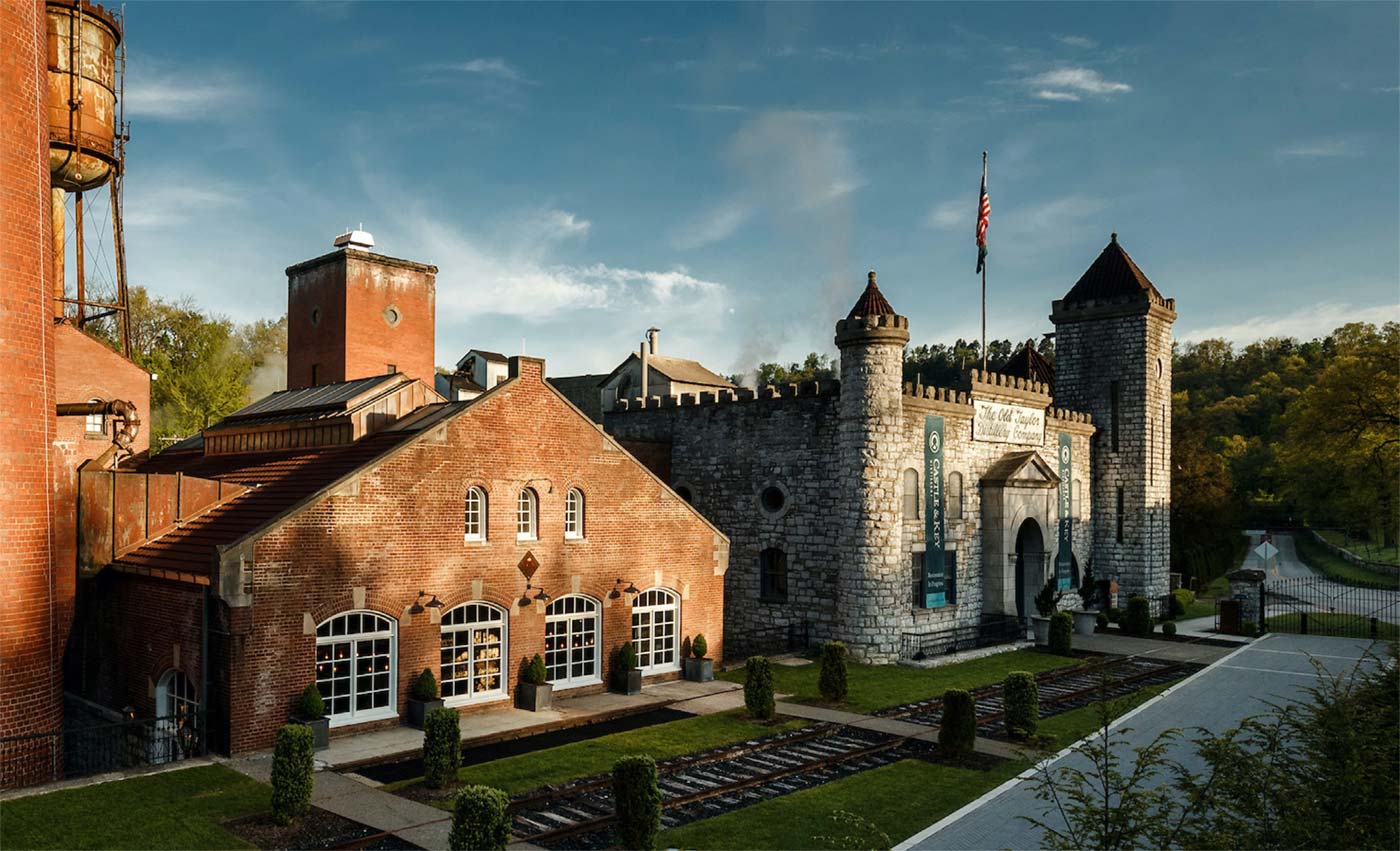
Castle & Key Distillery. Photo courtesy of Castle & Key Disttillery
WHAT'S OLD IS NEW
Bourbon tourism officially started in 1887 at the Old Taylor Distilling Co. in Millville. Col. Edmund Haynes Taylor wanted to create a distillery where he could entertain guests, and that first impression began at the factory’s façade: a coarse-cut limestone castle of Medieval design. The property featured an expansive sunken garden for outdoor entertaining, and a Roman column key-shaped peristyle for groups seeking shade near Glenn’s Creek. Taylor even had train tracks laid all the way to Taylorton Station, a brick and concrete ersatz depot where guests walked out of the rail cars.
Though Taylor’s parties equaled the excesses of the day’s Gilded Age celebrations, Prohibition—the ultimate buzzkill—ended the festivities there for nearly a century. While whiskey making resumed with the repeal of the Volstead Act in 1933, the partiers didn’t return until 2018, when a trio of owners spent more than $30 million to rehabilitate the legendary location under the name of Castle & Key Distillery. Famed landscaper and Kentucky native Jon Carloftis returned the sunken garden to its lush and leafy state; modern stills were added to produce whiskey, gin and vodka; and the former coal-fired boiler room was made into a gift and bottle shop. Other than that, the distillery looks much like it did in 1887, which is by design, said owner Will Arvin. “Our tours here center on the history of the place,” said Arvin. “We modernized where we had to, but wherever we could preserve what we had, we did that.”
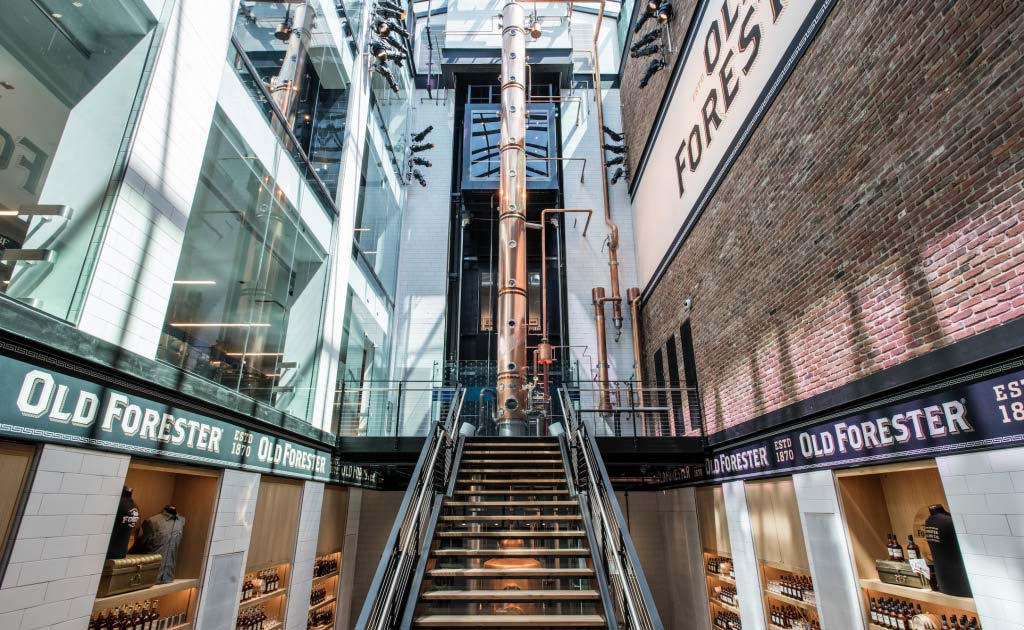
Old Forester Distillery and Visitor Center on Whiskey Row. Photo courtesy of Old Forester Distillery
Wes Murry, another of Castle & Key’s founding partners, said constructing a building in greenspace “wasn’t something I was interested in. But this place grabbed my attention for good the first time I saw it. Bringing something back to life that was basically left for dead was a challenge we all wanted.”
Similar renewals are underway in downtown Louisville. In 2018, Old Forester opened a distillery and visitor center in the very “Whiskey Row” Main Street building where founder George Garvin Brown worked in the late 1800s. Two years prior, Angel’s Envy built a significant distillery of its own on Main located five blocks east.
Between those spots are a pair of new whiskey-themed hotels. Head west for nine blocks to see the Evan Williams Bourbon Experience, which, when opened in 2013, was Louisville’s first purpose-built distillery for tourism.
And venture just four blocks farther for rye and bourbon cocktails at Kentucky Peerless Distilling Co., a whiskey heritage project created by Corky Taylor. His great-great-grandfather, Henry Kraver, operated a large distillery of the same name in Henderson, Kentucky, until Prohibition closed it.
All of these distilleries have bars and bottle shops, amenities that were denied distilleries for decades. Drinking specific whiskeys at the very places where visitors just saw them made is undoubtedly driving tourism numbers. According to the Kentucky Distillers’ Association (KDA), in 2019 bourbon fans made 1.7 million visits to distilleries on the Kentucky Bourbon Trail (1.3 million visits to large legacy distilleries, and 440,000 to smaller and newer craft distilleries). An additional 300,000 visits were made to Buffalo Trace and Barton 1792. As non-KDA members, their visits are tabulated separately from KDA totals. Any way you cut it, 2 million visits is a lot of money spent in Kentucky, especially when 70% of all visitors are non-Kentuckians. (The KDA has not released tourism numbers from 2020.)
Max Shapira said when talk of bourbon tourism flourished in the late 1990s, his imagination for what it could become was laughably limited. Were it not for “the expansive vision” of his late cousin, Harry Shapira, he said, “I’m not sure where that part of our business would be right now. We’re so thankful that he dreamed much bigger than all of us.”
During the June 2021 ribbon cutting for Heaven Hill’s expanded Bourbon Experience, it was clear that his mind is fully opened to possibilities of bourbon tourism.
“I think we’re just beginning to see where this can go,” Shapira said. “We’re only now beginning to grasp its potential. And as far as I can tell, it’s boundless.”


